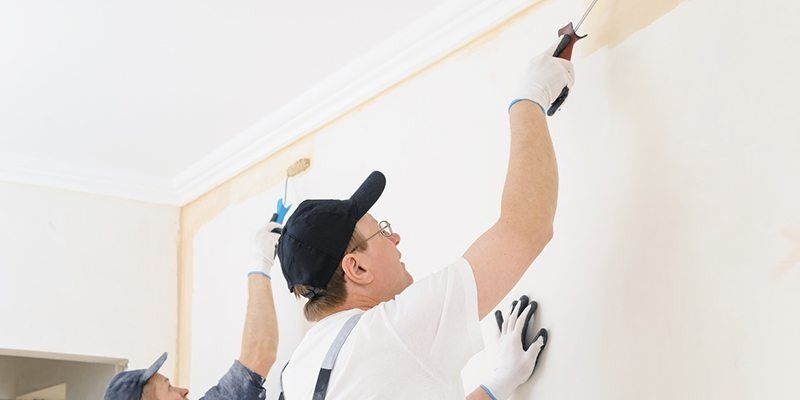When you’re updating the inside of your home, finding the right professional isn’t as simple as choosing the first name that pops up online. It often comes down to trust, detail, and making sure the work fits your expectations without unnecessary hassle.
I’ve gone through the process myself — walking through a freshly plastered hallway, wondering why the colour looked patchy only two days after the job was “finished.” That experience taught me something critical: credentials and communication matter more than the quote itself.
One way to reduce the risk is by narrowing your shortlist to painters who specialise in interior home painting service. These professionals are typically more attuned to the details that matter most inside the home, from surface prep to clean lines and appropriate finishes.
Ask the right questions before you commit

In my own case, I once hired someone based on word-of-mouth alone. They were friendly, quick with a quote, and seemed to understand the job. But midway through the project, I realised they hadn’t properly prepped the skirting boards or ceiling lines. That lack of detail wasn’t due to time — it was due to missing steps I didn’t ask about.
This is where thinking practically helps. Start by getting clear responses to these kinds of questions:
- What surface preparation will you do before painting begins?
- What type of undercoat or primer is used?
- Will any repairs or sanding be handled as part of the job?
- Who will be completing the work — you or a team?
Understanding the answers won’t just clarify what’s included; it sets expectations.
One topic worth asking about directly is how they handle paint finishes in high-traffic zones. Even the best colour choice can underperform if the finish is poorly matched to the space, and a knowledgeable painter will usually speak confidently about that kind of planning.
It’s also useful to ask how long they expect each stage to take, and whether those estimates include drying time or surface rework. That level of transparency often separates experienced professionals from those simply aiming to move fast.
Check their standards before they pick up a brush

One important part of hiring a professional interior painter is understanding whether they’re aligned with proper compliance practices — not just in technique but also in licensing. This step can be overlooked when homeowners assume all tradespeople operate under the same rules.
In NSW, painting licence requirements are tied to the scope of the job and who’s performing it. While not every interior job is legally required to be licensed, painters who do hold a licence often demonstrate higher trade accountability, formal training, and familiarity with interior-specific techniques.
This kind of oversight benefits the homeowner. It also helps avoid problems down the line, like improper surface prep or the use of non-compliant materials.
When reviewing credentials, also consider:
- Whether the painter is listed under a current, valid licence
- If the painter’s licence is specific to residential or interior work
- Whether the licence holder is the one completing the work or subcontracting it out
Asking about this early can give you a clear picture of who’s responsible if any issues arise — and whether that responsibility is enforceable.
Licensing also sets a clearer baseline for workmanship and risk. It’s not just about rules on paper — it reflects a track record that can help you make an informed decision about who to let into your home.
Use homeowner insights to evaluate service quality
What helped me most after a few missteps was refining how I compared different professionals. It wasn’t just about reviews or photos — it was about how each painter described their process, from prep through to finish.
If you’re unsure how to weigh up a few decent candidates, consider these tips for choosing a painter:
- Compare timelines, not just costs, and make sure the work is quoted in clear stages
- Pay attention to how painters answer questions about materials and surface type
- Watch for signs they’re glossing over prep work or downplaying clean-up responsibility
These points help separate detail-focused professionals from those working on volume or speed.
A well-structured quote can also reveal a lot.
Painters who take the time to itemise steps, clarify timelines, and confirm who will be responsible for which stages tend to deliver more consistent outcomes — not just smoother walls, but fewer post-job disputes.
And don’t underestimate the value of seeing their finished work in person.
If a painter has a recent project nearby, ask if the owner would be open to letting you take a quick look — most will say yes if the job was done right.
Consider the risks of tackling it alone

Some homeowners prefer to take on interior painting themselves, and in small areas or touch-up scenarios, that can make sense.
But for larger spaces, or when surface repairs are involved, it often leads to compromised results.
There’s a practical difference between rolling paint on a wall and delivering a clean, consistent finish across multiple surfaces. Comparing professional vs DIY painting helps highlight where that difference becomes visible.
Some common challenges that surface in DIY jobs include:
- Visible roller marks from inconsistent pressure
- Uneven paint absorption due to missing primer
- Streaks or colour differences between wall sections
- Paint bleeding over trims or light switches
Professionals are equipped to prevent these issues through surface control, material selection, and method — all of which take time to learn through experience. For most full-room projects, the end result often speaks for itself.
One of the more underrated benefits is time management. While a DIY job may take an average homeowner a week of evenings and weekends, an experienced team could have it done — clean, prepped, and dried — in a fraction of that time, without the mess spreading across every room.
Final thoughts on selecting a painter that works for you
Interior painting affects how your home feels every day, and the difference between a patchy job and a clean finish can come down to early decisions.
From checking painting licence requirements to comparing professional vs DIY painting pros and cons, each consideration adds clarity to the process.
And when you’re shortlisting candidates, relying on detailed comparisons and direct communication will often lead you to painters who don’t just paint — they plan, prep, and deliver.
For anyone beginning this process now, reviewing tips for choosing a painter may help reinforce what details really matter in the long run.
Taking the time to evaluate how a painter prepares, how they answer questions, and how they manage logistics will almost always reflect the quality of their finished work.
The best results often come from those who approach each job with structure, care, and an understanding that the finish isn’t just visual — it’s functional too.


